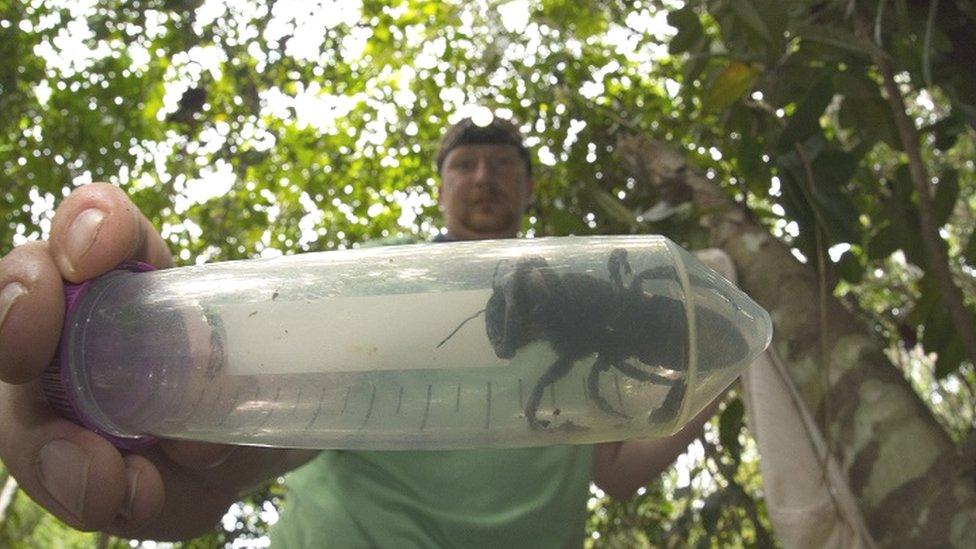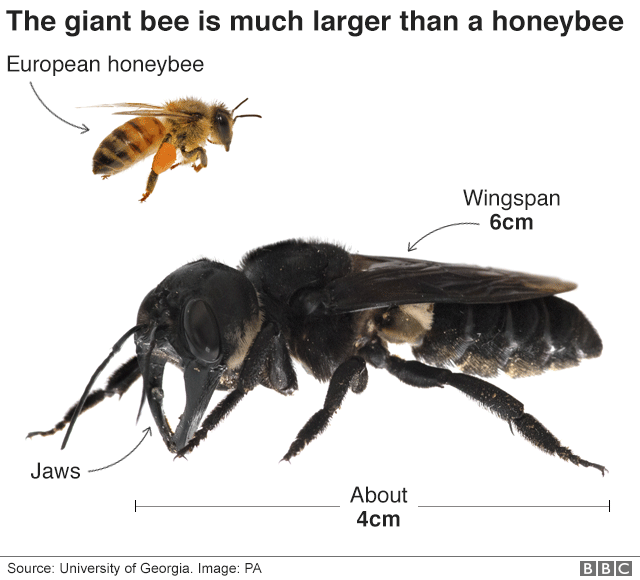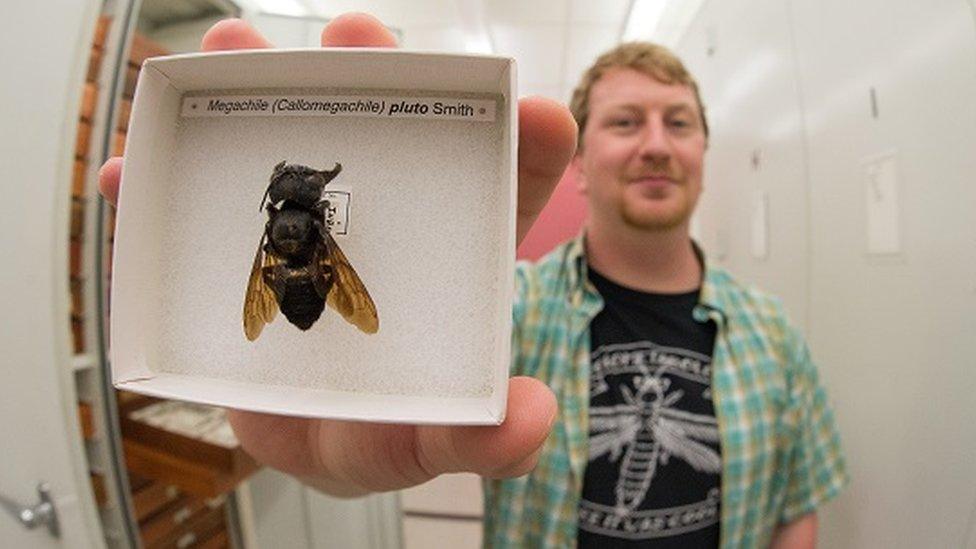World's biggest bee found alive
- Published

A single female Wallace's giant bee was found
The world's biggest bee has been re-discovered, after decades thought lost to science.
The giant bee - which is as long as an adult's thumb - was found on a little-explored Indonesian island.
After days of searching, wildlife experts found a single live female, which they photographed and filmed.
Known as Wallace's giant bee, the insect is named after the British naturalist and explorer Alfred Russel Wallace, who described it in 1858.
Scientists found several specimens in 1981 on three Indonesia islands. It has not been seen alive since, although there was a report last year of two bee specimens being offered for sale online.
In January, a team followed in Wallace's footsteps on a journey through Indonesia in an attempt to find and photograph the bee.


Eli Wyman with one of the few known Wallace's giant bee samples
"It was absolutely breathtaking to see this 'flying bulldog' of an insect that we weren't sure existed anymore, to have real proof right there in front of us in the wild," said natural history photographer, Clay Bolt, who took the first photos and video of the species alive.
"To actually see how beautiful and big the species is in life, to hear the sound of its giant wings thrumming as it flew past my head, was just incredible. "

Wallace's giant bee (Megachile pluto)
With an estimated wingspan of two-and-a-half inches (6 cm), Wallace's giant bee is the world's largest bee
The female makes her nest in termite mounds, using her large jaw to collect sticky tree resin to line the nest and protect it from invading termites
The species depends on primary lowland forest for resin and the nests of tree-dwelling termites
Wallace, who co-developed the theory of evolution with Charles Darwin, described the bee as, "a large black wasp-like insect, with immense jaws like a stag-beetle".

The discovery, in the Indonesian islands known as the North Moluccas, raises hopes that the region's forests still harbour one of the rarest and most sought after insects in the world.
There are currently no legal protections around its trade.
Trip member and bee expert Eli Wyman, an entomologist at Princeton University, said he hoped the rediscovery would spark research towards a deeper understanding of the life history of the bee and inform any future efforts to protect it from extinction.
Wallace's giant bee is currently listed as vulnerable to extinction, according to the International Union for Conservation of Nature.
However, the international trade of this species is currently not restricted by the Convention on International Trade in Endangered Species.
Environmental group, Global Wildlife Conservation (GWC), which has launched a worldwide hunt for "lost species", supported the trip to find the bee.
"By making the bee a world-famous flagship for conservation, we are confident that the species has a brighter future than if we just let it quietly be collected into oblivion," said Robin Moore.
In January, the group announced they had found more rare Bolivian frogs belonging to a species thought to be down to one male.
World's 'loneliest' frog gets a date
Follow Helen on Twitter, external.